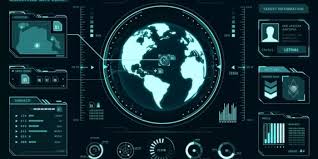
Introduction
Cyber warfare and security have become critical aspects of modern defense, national security, and corporate protection. As the world becomes increasingly digital, cyber threats pose significant risks to governments, businesses, and individuals. Cyber warfare involves the use of hacking, malware, ransomware, and other cyber tactics to disrupt, spy on, or damage an adversary’s digital infrastructure. Cybersecurity, on the other hand, focuses on defending networks, systems, and data from such attacks. Nations and organizations invest heavily in cyber defense strategies, encryption technologies, and AI-powered security systems to protect against evolving threats.
Types of Cyber Warfare

- Espionage: Cyber spies infiltrate government or corporate networks to steal sensitive data, trade secrets, or classified information.
- Sabotage: Hackers target critical infrastructure, military systems, or financial institutions to disrupt operations.
- Denial-of-Service (DoS) and Distributed Denial-of-Service (DDoS) Attacks: These attacks overwhelm networks, rendering websites and services unusable.
- Ransomware Attacks: Cybercriminals encrypt vital data and demand payment in exchange for its release, affecting businesses and government agencies.
- Disinformation and Psychological Warfare: The spread of false information, propaganda, or deepfake videos to manipulate public opinion and create unrest.
Cybersecurity Measures and Defense Strategies

To counter cyber threats, organizations implement multi-layered security measures that include:
- Firewalls and Intrusion Detection Systems (IDS): Monitor and filter traffic to prevent unauthorized access.
- Encryption and Data Protection: Secure communication channels using strong encryption methods.
- AI and Machine Learning in Cybersecurity: AI detects unusual activities and predicts cyber threats before they occur.
- Zero-Trust Security Models: Ensures that every access request is verified, reducing insider threats.
- Cyber Threat Intelligence (CTI): Uses data analysis to predict and prevent potential cyberattacks.
Challenges in Cyber Warfare and Security
Despite advancements in cybersecurity, several challenges persist:
- Rapid Evolution of Cyber Threats: Attackers continuously develop new tactics, making traditional defense systems obsolete.
- State-Sponsored Cyber Attacks: Countries engage in cyber espionage and attacks to gain a strategic advantage.
- Lack of Cybersecurity Awareness: Many individuals and businesses fail to implement strong cybersecurity practices, making them vulnerable to attacks.
- AI-Powered Cyber Attacks: Hackers use artificial intelligence to automate and improve the effectiveness of cyberattacks.

Future of Cyber Warfare and Security
The future of cyber warfare will likely involve quantum computing-based encryption, AI-driven security systems, and increased cooperation between nations to combat cyber threats. The use of blockchain for secure transactions, biometric authentication for user verification, and decentralized cloud storage will enhance cybersecurity frameworks. As cyber threats grow more sophisticated, governments and private organizations must remain vigilant, continuously adapting their defense strategies to protect against evolving digital warfare.
Conclusion
Cyber warfare and security are central to modern national defense and business operations, requiring constant innovation to stay ahead of adversaries. With increasing digitalization, the risks of cyber attacks are greater than ever, affecting economies, governments, and individuals alike. A proactive approach involving AI, encryption, and international cooperation will be essential in ensuring cybersecurity resilience. As technology advances, so too must our defenses, ensuring a safer and more secure digital world.

